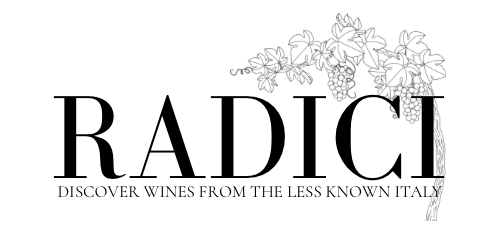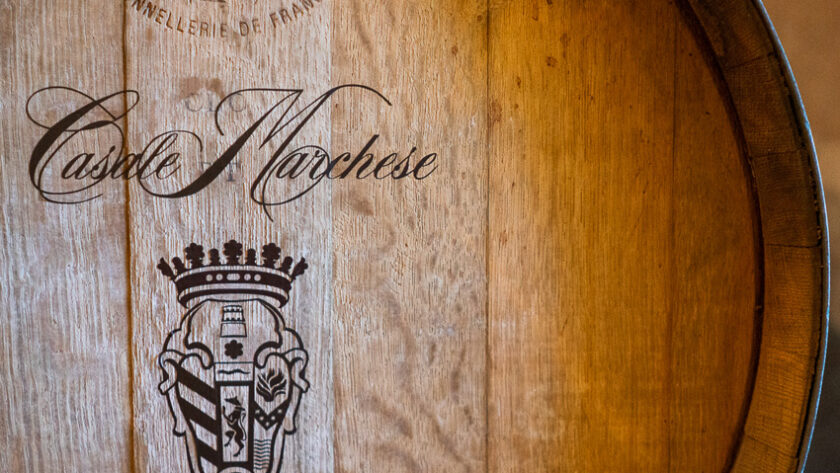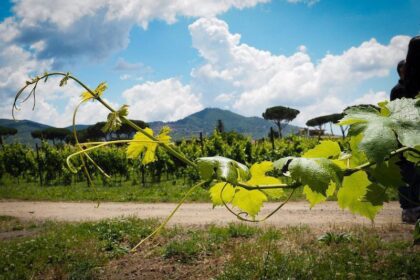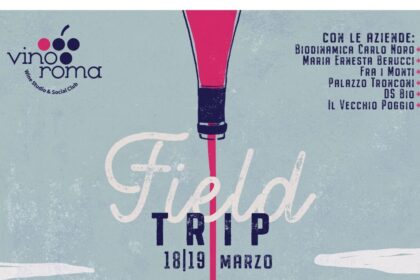Get your bottle here and be ready for the next week’s news review!
The history of Casale Marchese has ancient roots. Their journey began in 1301, when the Casale was mentioned in a Bull of Boniface VIII as part of the feud of the Annibaldi family.
Now close your eyes and imagine the cultural and artistic rebirth of Italy. Let’s take a leap of about 250 years. We are in the middle of the Renaissance period, when the Casale became the home of an illustrious figure, son of a close friend of Caravaggio: we are talking about the Marquis Emilio de’ Cavalieri (1550-1602), Italian composer and organist.
From the Marquis de’ Cavalieri derives the name still today on the maps “Casale del Marchese“.
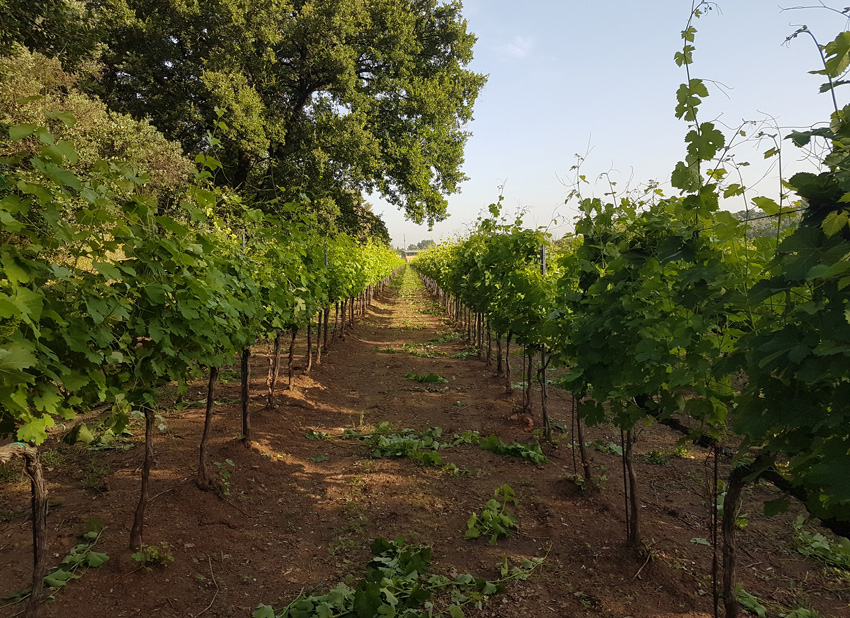
In the centuries to come, no trace of the estate has ever been lost, mentioned in several official documents such as the Papal Cadastre of 1860. The artistic vocation of the farmhouse, begun with the Marquis de’ Cavalieri, has continued over time. The estate has inspired artists, poets and writers such as Clara Wells, who brings it back in 1878 in one of her books.
The farm Casale Marchese is immersed in the territory of Frascati DOCG. The panorama is extraordinary: surrounded by more than 50 hectares of land mostly destined to specialized vineyards, alternating with secular olive trees.This is where wine has always been produced. Marco Porzio Catone, known as “the Censor”, an illustrious citizen of Tusca in 230 BC, advised to plant lives in their possessions because “optima loco“.
They are in one of the oldest places in the world where wine has been produced. Right here, at the foot of Mount Tuscolo, they produce Frascati DOC, a wine of excellence of the “Castelli Romani“.
Family Tradition for over two hundred years
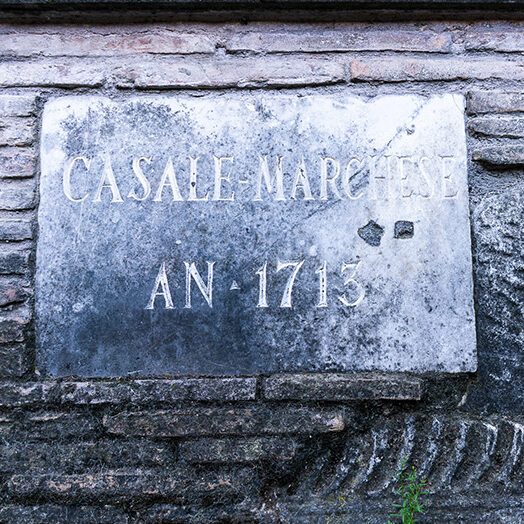
The Carletti family has owned the Casale Marchese Farm for about two centuries. Their history is a family tradition that, for two hundred years, is renewed every day.
Alessandro and Ferdinando are the seventh generation; the greatest, Alessandro, is the administrator, while the youngest, Ferdinando, is the agronomist of the company.
The family had two illustrious cardinals: Ludovico Micara (1775-1847) and Clemente Micara (1879-1965), to whom the wine “Clemens” is dedicated.
The present appearance of the farmhouse dates back to the 18th century. One part of the palace is the home of the Carletti family, while the other wing is destined for wine production. A part of the farmhouse has been recently restored: this space has been dedicated to the construction of a modern and technologically advanced cellar.
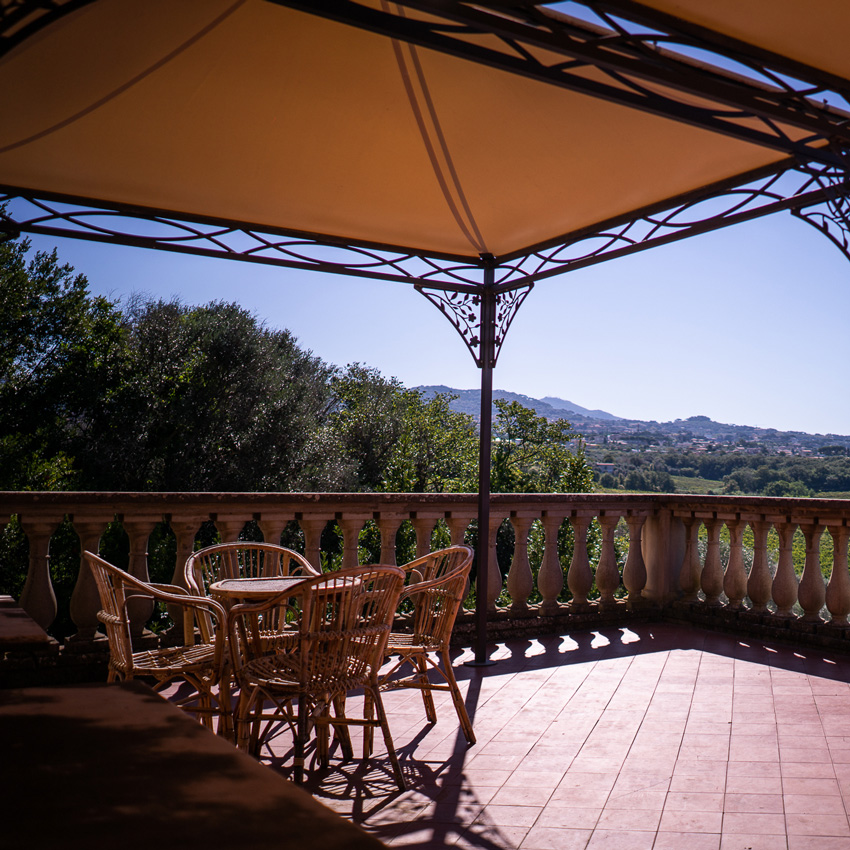
In the farmhouse the old and the new blend, creating a unique balance of tradition, culture and family love. You can immerse yourself in this atmosphere in the ancient cellar, which dates back to the late ‘700, and now houses the tasting room. They tell them the story you are reading to their guests, coming from all over the world, a moment accompanied by tastings and events on our wines and oils.
Production has been carried out with love for two centuries and each year brings with it elements of renewal. All the vinification, bottling and packaging processes are carried out in the farmhouse, where an extra virgin olive oil is also produced exclusively from the estate’s olives.
The vineyards and the territory:care and respect for the environment
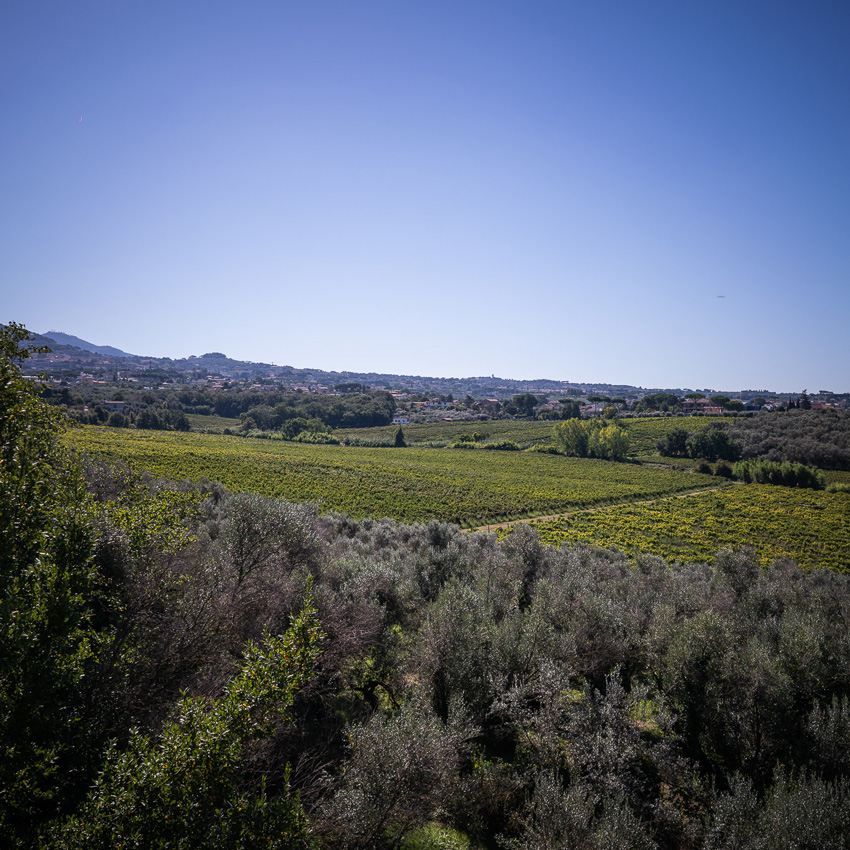
Their vineyards are mostly cultivated in Cordone Speronato, with a high density of plants per hectare (4,000 – 5,000) and short pruning; this allows to better concentrate the chemical and physical characteristics of quality in the few bunches produced per plant (1.5 – 2kg).
For them, respect for nature and the place where they live is a priority. They love this land and have protected it for over two centuries. For this reason they manage the crops following the rules of integrated production, with exclusive use of products with low environmental impact.
The varieties of Casale Marchese vineyards are those traditionally used for the production of Frascati wine: Malvasia Puntinata, Malvasia di Candia, Trebbiano Toscano, Greco, Bombino, Bellone. International varieties such as Chardonnay, Merlot, Cabernet Sauvignon and Cabernet Franc have recently been planted.
A new generation wine cellar where wine comes to life
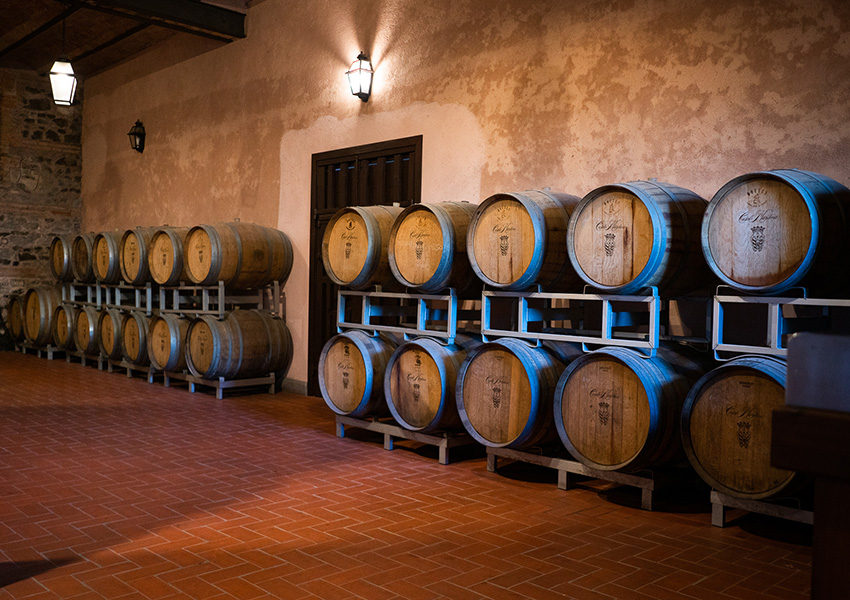
The winery has been recently renovated and equipped with state-of-the-art machinery. It is in this place that the grapes of their land work, in full respect of the environment and the raw material. It all starts with the harvest of the grapes and the harvest period. Once harvested, the grapes are gently pressed with pneumatic presses.
The soft pressing does not tear the skin of the grapes, safeguarding the aromas and scent of the must. The cellar is divided into several floors: upstairs there are winemakers for the production of red wines. On the ground floor there are additional tanks for the fermentation of white wines.
The most fascinating part of the cellar is the barrique, obtained in the ancient eighteenth-century spaces of this environment. Here are the French oak barrels used for the aging of two wines: the “Marchese de’ Cavalieri” and the “Cortesia”.
The harvest: the beginning of a journey of excellence
The production of wines begins with the collection of grapes. Typically the harvest in these places starts from the first week of September and ends in mid-October. The family believes in respecting their land and in the production of high quality: for this reason they choose to harvest the grapes strictly by hand, according to the variety and the degree of maturation.
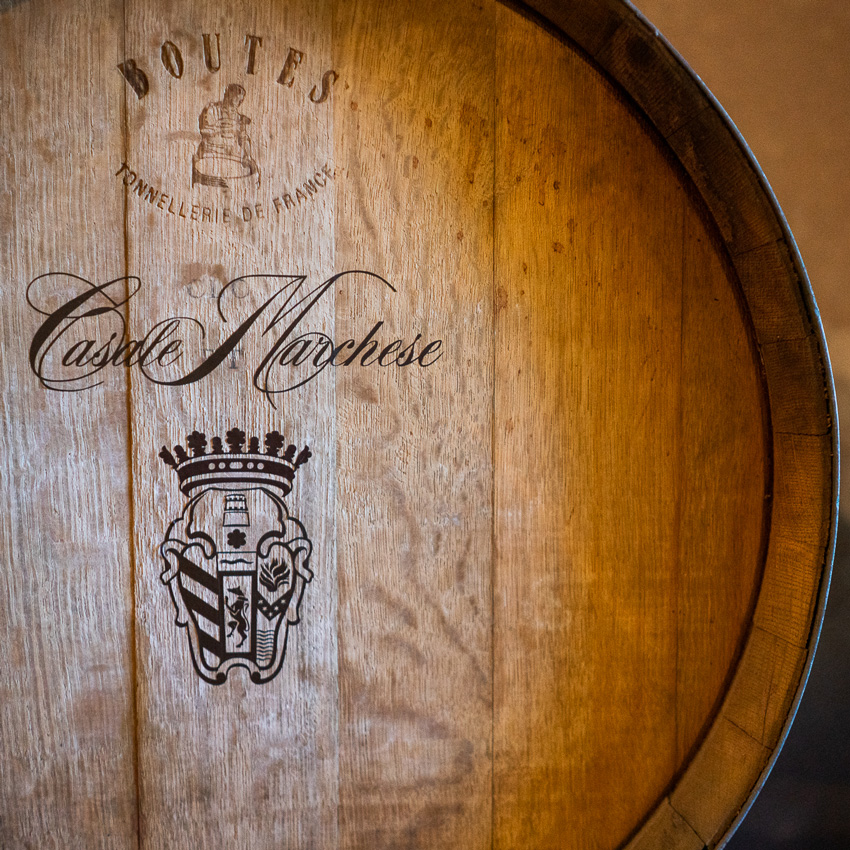
The manual harvesting of the grapes is a delicate operation, which takes place using specific pruning scissors. This allows you to select at sight the ripe bunches and respect the crops. The harvest is the most intense and beautiful moment for the farmhouse: it is in these weeks that the family tradition is renewed and the fruits of a whole year of work are collected. After harvesting the grapes, they are processed in the cellars and transformed into the best wine.
Frascati Superiore DOCG
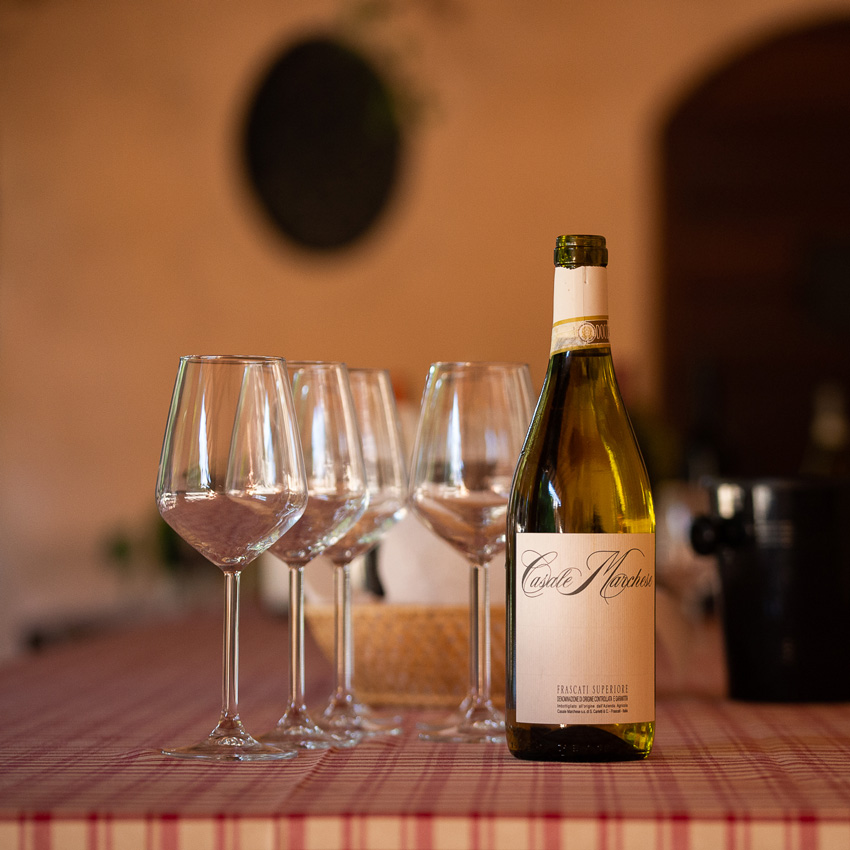
History
The wine is the real protagonist of the territory of the ancient Tusculum, where the Casale Marchese stands. The production of the “nectar of the gods” has been documented since Roman times. Frascati is a typical excellence of this land, which Andrea Bacci in the sixteenth century called “a place of delights, generous with grapes and various fruits…those illustrious farmers had propagated in their vineyards the most chosen vines of Italy”.
Winemaking
Frascati Superiore DOCG comes from the grapes of the vineyards Malvasia del Lazio, Trebbiano Toscano, Bonvino, Bellone. The vines are grown in spur cordon, on a volcanic soil. Density strain/ha 4,000. The average yield of grapes per strain is 2 kg.The vinification process begins with the manual harvest of the grapes, stored in perforated boxes of 15kg. The grapes are subjected to soft pressing and selection of the different fractions of must. The must passes to static clarification and separation of funds. Then happens the controlled alcoholic fermentation, which lasts about a week. In the must are added selected yeasts. In December, the cold tartar stabilization process takes place, followed by bottling from January until June.
Organoleptic Qualities
The bouquet of Frascati Superiore DOCG is characterized by scents of tropical fruit, with slightly herbaceous floral shades. The taste is savory. Full-bodied with a soft, elegant and enveloping aftertaste. Frascati is known as a wine to be drunk by the next harvest. The Frascati of “Casale Marchese”, while being pleasant already from February – March, gives the best of itself only near the summer and therefore is enriched by a slight permanence in glass.
Pairings
Frascati Superiore DOCG is perfect as an aperitif, with fish dishes, meat and fish carpaccio, pizza or fresh goat cheese.
Technical Card
Alcohol: 13,50%
Residual sugars: 00 g/l
Total acidity: 5,50 g/l
pH: 3,45
Total extract: 24,00 g/l
Bottle: 750 ml/350 ml
Source: Casale Marchese
